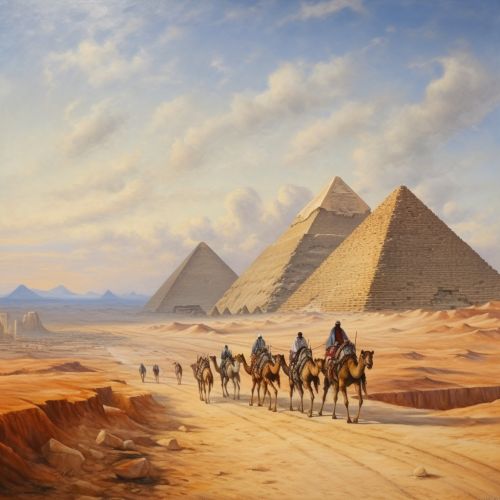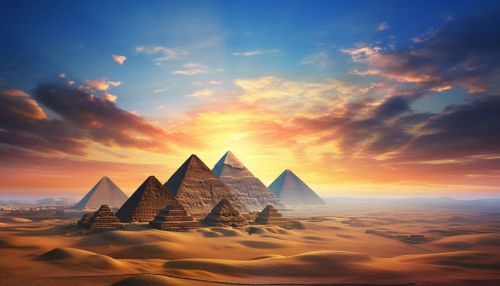Egypt
Ancient Egypt


Ancient Egypt was a civilization of ancient North Africa, concentrated along the lower reaches of the Nile in the place that is now the country Egypt. Ancient Egyptian civilization followed prehistoric Egypt and coalesced around 3100 BC (according to conventional Egyptian chronology) with the political unification of Upper and Lower Egypt under Menes (often identified with Narmer).
The history of ancient Egypt occurred in a series of stable kingdoms, separated by periods of relative instability known as Intermediate Periods: the Old Kingdom of the Early Bronze Age, the Middle Kingdom of the Middle Bronze Age and the New Kingdom of the Late Bronze Age.
Geography
The geography of Egypt greatly influenced the unique culture these ancient civilizations created. Egypt is located in the northeastern corner of Africa, bordered by the Mediterranean to the north and the Red to the east. The Nile River, the longest river in the world, runs north and south through the country, and was the lifeblood of the Egyptian civilization.
Society
Egyptian society was highly stratified, with a small elite ruling class of pharaohs, priests, and nobles, a middle class of merchants and artisans, and a large lower class of farmers, servants, and slaves. The pharaoh was considered a living god and had absolute power over the kingdom.
Religion
Religion was an integral part of ancient Egyptian society. The Egyptians practiced polytheism, with a large pantheon of gods and goddesses. They believed in an afterlife and that the actions of individuals could influence their fate in the afterlife. This belief led to the practice of mummification and the construction of elaborate tombs, including the pyramids.
Language
The ancient Egyptians used a writing system known as hieroglyphs, which used pictorial symbols to represent words or sounds. Hieroglyphs were used for religious literature on papyrus and wood, and also for monumental inscriptions on stone.
Art
Egyptian art is renowned for its distinctive style and adherence to conventions that remained remarkably consistent for over 3000 years. This art includes a wide array of mediums, including sculpture, painting, pottery, and architecture.
Legacy
The legacy of Ancient Egypt is profound and has greatly influenced the development of art, architecture, religion, and politics in subsequent cultures. Its contributions to civilization include the earliest known forms of writing, organized religion, and centralized government.
